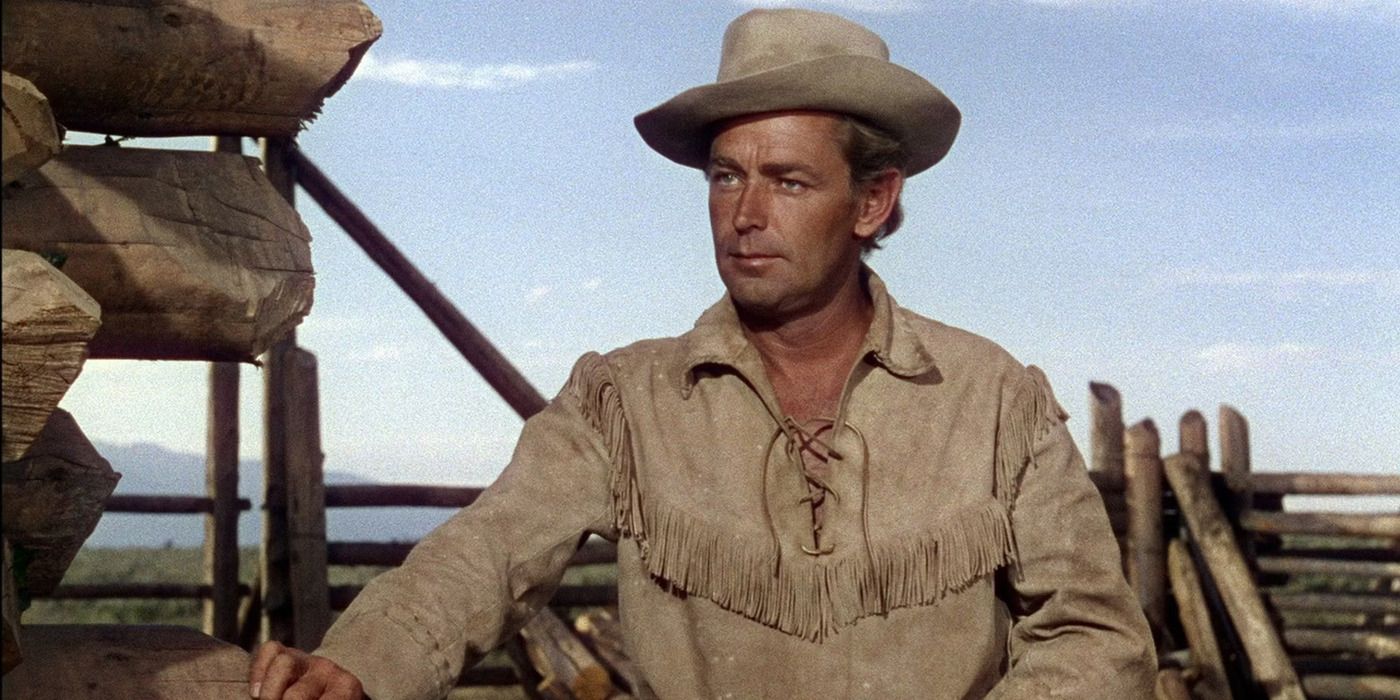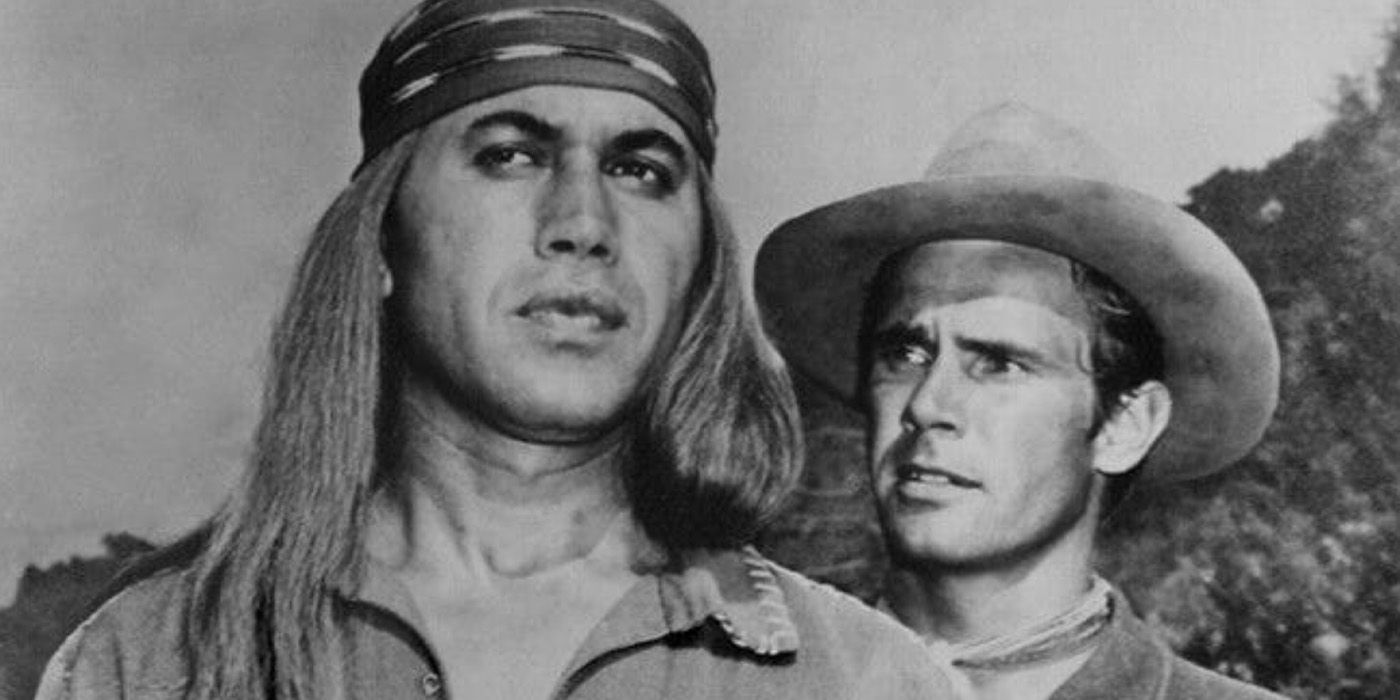The Big Picture
-
Broken Arrow
(1950) was ahead of its time in portraying Native American issues positively in the Western genre. - The TV adaptation carried on the film’s ideals of tolerance and equality between white settlers and Native Americans.
- While the TV series lacked the star power of Jimmy Stewart, both adaptations challenged stereotypes and promoted understanding.
Very few actors have quite the reputation and notoriety across a breadth of genres as Jimmy Stewart did, and yet, the actor crossed over into most during his time. But aside from the likes of It’s a Wonderful Life and Rear Window, perhaps the most prolific genre of the movie star’s career was the American Western, a type of motion picture that idealized the Old West while often analyzing modern issues. One such Western was the 1950 picture Broken Arrow, which jumped leaps and bounds ahead of its contemporaries when it came to representing Native American peoples in a positive light. In fact, the film was so notable, earning itself three Oscar nominations and a Golden Globe Award for Best Film Promoting International Understanding, that ABC opted to bring the story to television, albeit without the picture’s delectable star.
Broken Arrow (1950)
- Release Date
- 1950-08-00
- Director
- Delmer Daves
- Cast
- James Stewart , Jeff Chandler , Debra Paget , Basil Ruysdael
- Runtime
- 93 minutes
- Writers
- Elliott Arnold , Albert Maltz , Michael Blankfort
Jimmy Stewart’s ‘Broken Arrow’ Led to a Television Adaptation Years Later
The thing about Broken Arrow is that, although it cast non-Native actors in Apache Indian roles (which was common practice in Hollywood back in the day), it was leaps and bounds ahead of many other Westerns in the way they tackled Native American issues. Prior to that, films like Stagecoach and Drums Along the Mohawk depicted these “wild warriors” as simple antagonists with no real depth. Broken Arrow, while not the only film to do this, was one of the first to give a real voice to the Indigenous population, which was hard to come by in 1950. Of course, it helps that the film was based on Elliott Arnold‘s book Blood Brothers, which itself was based on the real-life history and friendship between Tom Jeffords and Apache chief Cochise (played in the picture by James Stewart and Jeff Chandler respectively).
Throughout the film, Jeffords and Cochise come to a mutual respect, and Jeffords (contrary to the historical account), even falls in love with and marries an Apache woman, Sonseeahray (Debra Paget). The pair begin to broker a real peace between the United States and the Apache people, and ultimately succeed. While the real story was a lot more bloody, and a bit more tragic, the film offers us an idealistic take on how things might have gone. But where the motion picture opted to tell its own version of the events chronicled in Arnold’s account, the television adaptation of the book honored the original material a bit better. Keeping the popular and instantly recognizable Broken Arrow title, the series brought back Tom Jeffords and Cochise, now played by John Lupton and Michael Ansara (yes, the voice of Mr. Freeze in Batman: The Animated Series), starting with a reboot of the events told in the 1950 film.
Premiering on ABC in September 1956, Broken Arrow was instantly hailed as a classic by Donald Kirkley of The Baltimore Sun, who compared it favorably against the last season’s poorly received Brave Eagle. “Broken Arrow, although not without its shortcomings, is the best television program about Indians made yet,” the reviewer noted, hailing the show’s attempts at historical accuracy regarding the Apache people, and Cochise in particular. While the Blood Brothers book was still a fictional account, Arnold had carefully researched the life and friendship of Jeffords and Cochise, hence the television production’s decision to base itself strictly on the novel. Broadcasting Magazine once noted that the show was able to “skillfully [cram] a lot of story into 30 minutes.”
The ‘Broken Arrow’ TV Show Honored the Film’s Lofty Ideals
What the show did best, though, was build upon the ideals and themes first established in the 1950 film and continue the idea that the “white eyes” and Native Americans are equal, both in value and presence. John Lupton and Michael Ansara have pretty equal screen time on the show, something many outlets praised for its bold stance on the Native American issue. “This kind of friendship, although fairly common on the frontier, is very rare in fiction in any form,” remarked Kirkley, who adds that the dynamic between Lupton and Ansara’s characters is the kind of “freshness” that television needed at the time. This was done by design from the very beginning, as the series wanted to take the film’s concepts of tolerance and equality a step further onto the broadcast airwaves.
“We’ve created a happy medium between Jeffords and the Indian leader Cochise,” John Lupton told The Minneapolis Star in a 1957 interview. “Early this season we attempted to concentrate on Jeffords, but we found we were losing some of our audience and returned to the original format.” It turns out, the biggest reason folks tuned into ABC on Tuesday nights in the late 1950s was because of the very thing that Broken Arrow promoted, a shared understanding and experience of the Old West that blended these two cultures together. Ansara and Lupton worked well together, and the pair would play their characters side-by-side for 72 episodes between 1956 and 1960, at a time when the civil rights movement was really picking up steam. Still, even that wasn’t enough to keep the show (sometimes called Cochise in syndication) around for a third season.
According to The Complete Directory to Prime Time Network and Cable TV Shows, 1946–Present by Tim Brooks and Earle Marsh, ABC switched Broken Arrow from Tuesday nights — where it played with The Life and Legend of Wyatt Earp and Cheyenne — to Sundays midway through its second season, perhaps due to declining ratings. Unfortunately, that also marked the end of the series’ run on television. In total, the series ran for an impressive two seasons, each of which sees Jeffords and Cochise working together to keep the peace between two otherwise intolerant groups. Sure, sometimes things got out of hand, and there are plenty of bad actors on both sides who show up to cause some real trouble, but these blood brothers handle it together. Today, Broken Arrow is often forgotten in favor of its slightly older feature film counterpart, no doubt due to James Stewart’s exceptional performance.

Related
The 10 Most Historically Accurate Western Movies, Ranked
Once upon a time in the historically accurate West…
‘Broken Arrow’ Is an Excellent Film, Even if the TV Version Was Lacking
But although Broken Arrow, the television series, was bold in its approach to racial discrepancies and issues, it couldn’t quite live up to the standard of the 1950 film. Budget aside, John Lupton was no James Stewart, and many criticized the actor’s portrayal as “not quite tough enough” (per The Baltimore Sun). Likewise, Ansara was deemed the same, and the pair, though earnest in their portrayals, have been tossed aside in favor of the more dynamic Chandler and Stewart duo. It’s not surprising either, since Broken Arrow, the film, does such a powerful job at tackling this conflict in 93 minutes, while the television series ran for 72 individual 30 minute installments. It’s not hard to see why some would prefer the shorter narrative with the better actors over the longer series with decent performances.
While not as famous as some of Stewart’s other iconic Westerns, such as How the West Was Won, The Man Who Shot Liberty Valance, and The Man from Laramie, nor as excellent as others like The Naked Spur or Winchester ’73, his 1950 feature was a major accomplishment. Its success led to a relatively successful television show, and proved to Hollywood that the life and perspective of Native American people also matter. They weren’t just villainous warriors set to raid your camp, nor were they one-dimensional caricatures who speak only when spoken to; they’re layered and complex, just like everyone else. Like the novel that inspired them, both Broken Arrow adaptations honored their historical figures well, and challenged us to strive for a better, more peaceful world.
Broken Arrow, the film, is available for streaming on Peacock in the U.S., while the television series is sadly not available on streaming.
Watch on Peacock





